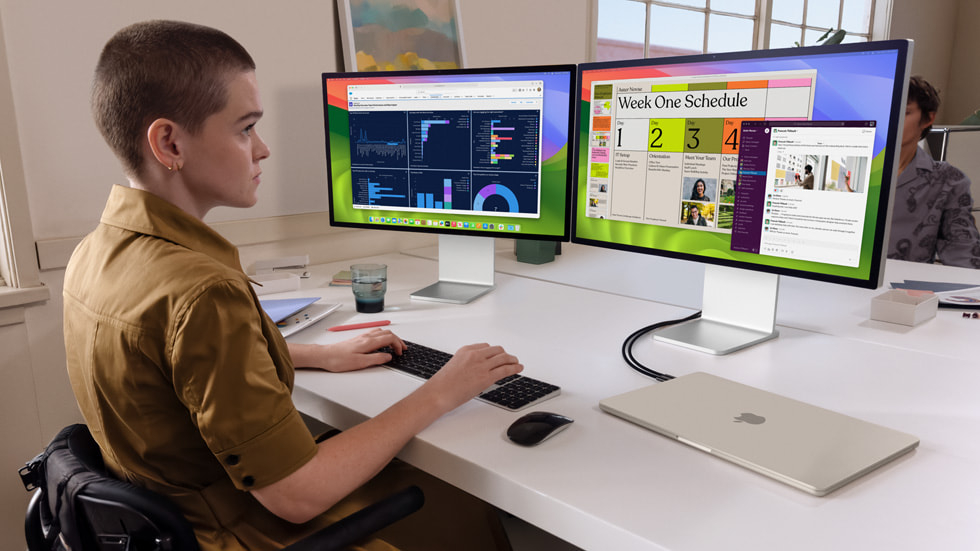Don't use your M3 MacBook Air with the lid closed — tests reveal 50% speed reduction in clamshell mode as the temperature increases
The M3 is fast, except when it isn't.

The latest and greatest M3 MacBook Air is now on sale and that means that people have been putting it through its paces for a little while. The machine has a lot going for it not least an upgraded chip, a thin and light design, and a choice of colors to boot. But one of the notable additions over the previous models is that the latest MacBook Air can be hooked up to two external monitors at once. The limitation? You'll lose access to the internal display, but that could be worth the trade-off if you need extra space with which to work. However, it turns out there might be a catch.
New testing shows that running the MacBook Air with external displays attached works well, but things can start to go awry when people do something that they've been doing with Mac laptops for decades now. Closing the lid, or running the MacBook Air in clamshell mode as it has become known, can drastically reduce the performance of the machine according to new tests. And when we say drastically, we really mean it.
According to those tests, an M3 MacBook Air's performance can be slashed by almost half just by closing the lid and having it work hard, something that those who work with intensive workflows are likely to do regularly. As a result, running the MacBook Air with the lid open is definitely the way to go — but you can still expect a performance hit when the temperatures start to rise.
Who needs all that performance anyway?
The tests, carried out by YouTube channel Max Tech, show the M3 MacBook Air being put through its paces using the 3DMark Wildlife Extreme Stress Tests. The tests are run using the MacBook Air connected to an external monitor with the lid both closed as well as the machine running with the lid open. The results of the tests give us an idea of how the laptop performs over a period of time, especially when that M3 chip is being pushed to the limit.
As you'll see from the video above, the performance of the M3 does start to decline throughout the tests even with the lid open. An initial score of 8,083 gives way to one of 5,196 as the test is run with the lid open and the laptop starts to heat up. Remember, the MacBook Air is a fanless design which means the only heat it loses is via its built-in passive heatsink. It's a trade-off that has to be made, and for most people, it might not matter. But for those who push the laptop harder, it becomes problematic the longer the M3 is placed under strain.
That lack of fan really bites when the M3 MacBook Air is run in clamshell mode, though. By covering the keyboard area with the display the MacBook Air is stripped of its main method of heat dissipation and the temperatures ramp up more severely. As a result, a score of just 4,198 can be had early into the testing period — a clear indication that heat is an issue.
There are a couple of ways around this, including elevating the laptop to give it more space to breathe or using a cooling laptop pad. Using the MacBook Air with its lid open — even if you just ignore the internal display — is another option, too, but you'll lose that second monitor option. Ultimately, the MacBook Air isn't the best MacBook for those who want performance that doesn't tail off when the heat's turned up. For that, you're probably going to need to look at an M3 Pro MacBook Pro if you want to keep that second external display.
Master your iPhone in minutes
iMore offers spot-on advice and guidance from our team of experts, with decades of Apple device experience to lean on. Learn more with iMore!
More from iMore

Oliver Haslam has written about Apple and the wider technology business for more than a decade with bylines on How-To Geek, PC Mag, iDownloadBlog, and many more. He has also been published in print for Macworld, including cover stories. At iMore, Oliver is involved in daily news coverage and, not being short of opinions, has been known to 'explain' those thoughts in more detail, too. Having grown up using PCs and spending far too much money on graphics card and flashy RAM, Oliver switched to the Mac with a G5 iMac and hasn't looked back. Since then he's seen the growth of the smartphone world, backed by iPhone, and new product categories come and go. Current expertise includes iOS, macOS, streaming services, and pretty much anything that has a battery or plugs into a wall. Oliver also covers mobile gaming for iMore, with Apple Arcade a particular focus. He's been gaming since the Atari 2600 days and still struggles to comprehend the fact he can play console quality titles on his pocket computer.
